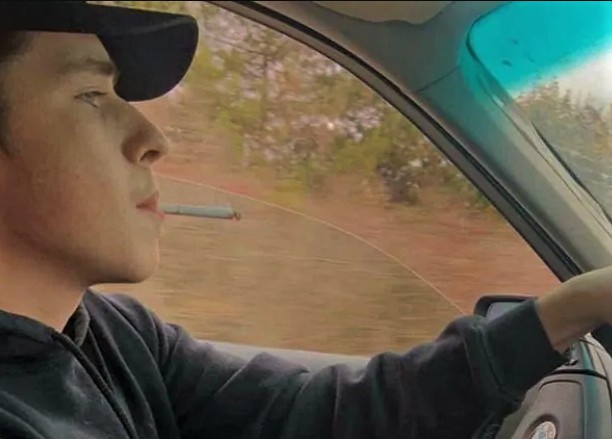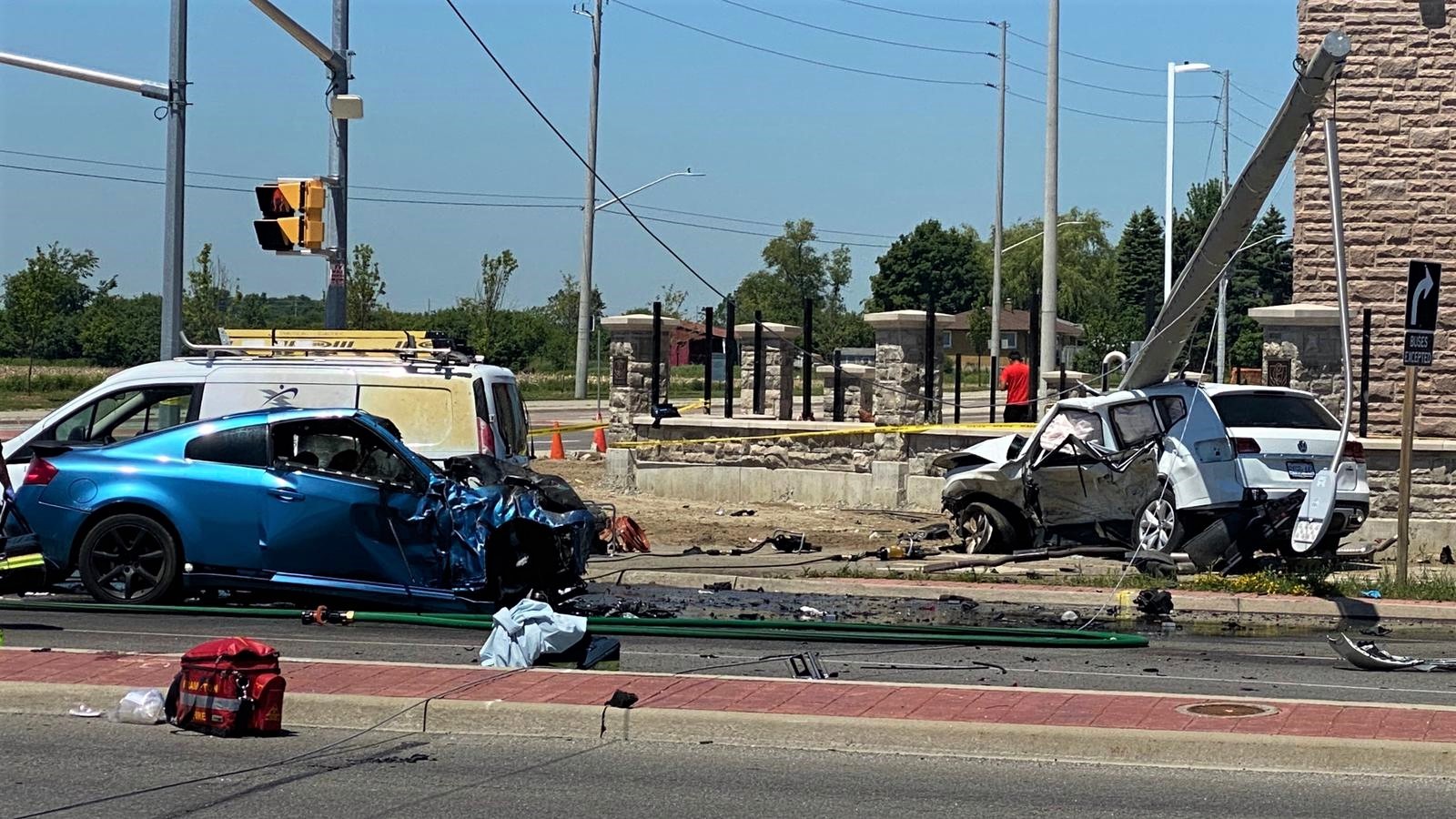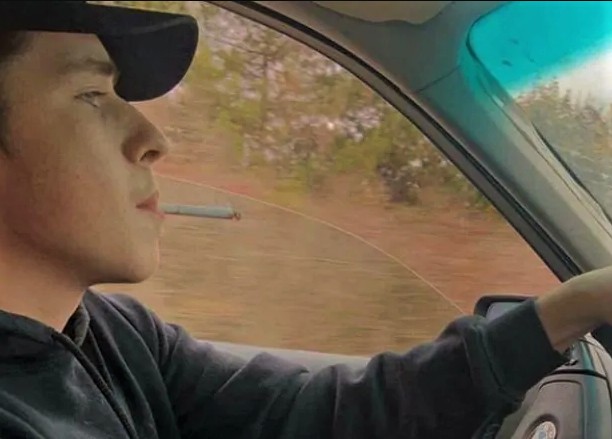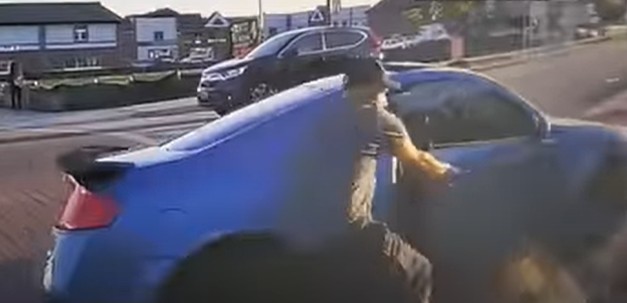
Judge signals Brady Robertson case will set precedent in rulings after cannabis was legalized
When cannabis became legal in Canada on October 17, 2018 a range of unknowns permeated the often heated debate around the decision.
When we became the first G20 nation to make the controversial move, one of the most contentious issues was how the courts would adjudicate various cases linked to legal cannabis, after the recreational drug was set to be widely available to adults across the country.
A concern raised by legal experts, and many others, was that case law moving forward should not signal leniency toward cannabis use in dangerous, illegal situations, just because the drug is now generally legal.
On Wednesday, virtually in a Brampton courtroom, Justice Sandra Caponecchia took a bold step in establishing case law in the post legal-cannabis era, with what could be a landmark ruling.
She decided that blood and urine samples and drug evidence can be used in the case against 21-year-old Brady Robertson, who killed a Caledon mother and her three daughters in a ghastly Brampton crash last year, despite the apparent violation of Charter rights in the obtaining of the evidence.

Karolina Ciasullo and her three daughters were killed by Brady Robertson. (Image-Facebook)
Robertson’s lawyers, Craig Bottomley and Mayleah Quenneville, were attempting to get the critical evidence thrown out for violating their client’s Charter rights, after drug evidence in Robertson’s car was seized during a routine inventory search by Peel Police, six days after the car accident, and after a urine sample was taken into evidence despite a warrant that only asked for a blood sample.
The defence argued that the evidence taken from the car amounted to an illegal search that was conducted late and for another reason, which led to Robertson’s arrest while he was in a Toronto hospital, and the seizure of a urine sample violated the warrant. It was later found that Robertson had eight times the legal limit of THC, the main active ingredient of cannabis, after the fiery collision that killed Karolina Ciasullo and her three daughters.
Despite the application that claimed Robertson’s rights were violated, specifically constitutional provisions that protect against unreasonable search or seizure under the Canadian Charter of Rights and Freedoms, Justice Caponecchia ruled in favour of allowing the evidence into the case.
It was reported that Justice Caponecchia said the drugs and urine seizure by Peel Police did breach Robertson’s rights, but the rejection of the evidence could bring the administration of justice into disrepute.
Caponecchia acknowledged in her decision the significant interest in the outcome of the case, and the potential to establish precedent after the recent legalization of cannabis.
“This is a serious offence that resulted in the tragic death of a mother of her three young children in the middle of a summer day. It was committed by a young adult, driving a newly purchased car with eight times the legal limit of THC in his blood just one hour after the offence took place. The offence took place less than two years after the legalization of cannabis,” Justice Caponecchia stated during the video proceeding, according to Global News.
"With the relatively recent advent of the legalization of this recreational drug, there is a strong societal interest in the adjudication of impaired driving by drug cases where multiple deaths are caused, absent the establishment of one or more egregious Charter violations. This is not one of those cases. I am satisfied the administration of justice would be brought into disrepute by the exclusion of evidence in this case."

Brady Robertson's blue Infiniti and the Volkswagen Atlas that carried the Ciasullo family. (Image-Ontario Superior Court)
June 18, 2020, Robertson crashed his blue Infiniti G35 into a Volkswagen Atlas with Ciasullo and her three daughters sitting inside at the intersection of Torbram Road and Countryside Drive in Brampton. Later in court it was revealed the then 20-year-old Robertson was travelling about 135 kilometres per hour when he approached the intersection, swerving out of the lane around stopped vehicles and eventually ramming into the SUV before a hydro pole fell onto its roof.
Robertson pleaded guilty to four counts of dangerous operation of a motor vehicle causing death. He has pleaded not guilty to four other counts of impaired driving and a dangerous driving charge involving an incident that took place two days earlier.
After the accident Robertson was taken to Brampton Civic before he was transferred to St. Michael’s Hospital in Toronto. Blood was drawn from Robertson in Brampton Civic at 1p.m., which was approximately one hour after the tragic accident. The toxicology report of the blood sample found Robertson had THC in his system. The legal limit allows for five nanograms per millilitre of blood. Robertson had 40 nanograms per millilitre of blood (the range of error is plus or minus three nanograms).
Later that afternoon at 3:21 p.m. when Robertson was in Toronto, a second blood sample was drawn. This showed 15 nanograms of THC per millilitre of blood (the error range is plus or minus one nanogram). Less than 1.3 nanograms per milliliter of fentanyl was also detected.

Brady Robertson claims he did not have drugs in his system despite samples that show he had 8 times the legal limit of THC. (Image-Facebook)
In July of this year, forensic scientist Betty Chow, who presented the toxicology report to the court, said fentanyl can impair those driving a vehicle. It’s effect depends on how it's administered, how much gets in the blood, and the user's tolerance to it. During cross examination Chow was asked about possible reasons for why fentanyl was in Robertson’s system. Chow admitted it could have been administered in hospital for his pain, after the crash caused serious injuries to the driver.
Six days after the June 2020 accident, Peel Police conducted a routine inventory search, in order to collect any valuables belonging to Robertson that may still be in the car. Staff Sgt. Gary Carty, the investigation’s major case manager, discovered four white pills in the glove box, determined to be fentanyl, and a baggie containing 8.5 grams of cannabis, during the inventory procedure.
It’s unclear why Peel police did not conduct a proper search of the vehicle for evidence, possibly with a warrant, prior to the inventory check. The vehicle was engulfed in flames at the accident site and badly damaged, the entire front end completely smashed in, which would have made it difficult to search immediately. The accident scene was also taped off so investigators could reconstruct what had happened to cause the crash.
The defence lawyers argued during trial that Sgt. Gary acted unlawfully by conducting the search days later while Robertson was in hospital.
The Crown argued the search was justified on two grounds: the lawful seizure of the car under the Highway Traffic Act allows for the inventory search — for which he argued there is no expiry date — and police were lawfully allowed to search the car in relation to Robertson’s conduct, and the possibility of criminality.
Only because police searched the vehicle, finding the drugs, did they move to obtain blood and urine samples from the hospital, the defence argued, adding that the warrant for the samples clearly did not include urine, and therefore the medical evidence obtained through the urine sample should be thrown out.
Justice Caponecchia ruled in favour of the Crown and is allowing the urine sample and drug evidence from the car into the case.
Robertson is also pleading not guilty to another charge of dangerous operation of a motor vehicle in relation to an incident that took place on June 16, 2020 (two days before the tragic accident) when a blue Infiniti violently drove up onto a sidewalk close to Robertson’s Caledon residence. A video of the incident shows the driver who fits Robertson’s description asleep or passed out behind the wheel, driving up onto the sidewalk as shocked passersby try to stop him before he snaps to and speeds off.

Video taken two days before the fatal crash shows Robertson's car driving onto a sidewalk as a bystander tries to stop him. (Image-Twitter)
The defence argued there is a lack of evidence proving it was Robertson behind the wheel. The Crown said it was the same car with the same licence plate and pointed to the video, showing the Infiniti driving over the curb and onto the sidewalk, with a man behind the wheel wearing a baseball cap, then showed a video taken at a Shell gas station on June 18 shortly before the fatal collision where Robertson is wearing a similar baseball cap, matching the description from bystanders and the earlier video.
The trial will resume November 1, when Justice Caponecchia will hear the defence mount a constitutional challenge regarding the legal limit of THC, which could form the basis of case law going forward.
Email: [email protected]
Twitter: @taasha__15
COVID-19 is impacting all Canadians. At a time when vital public information is needed by everyone, The Pointer has taken down our paywall on all stories relating to the pandemic and those of public interest to ensure every resident of Brampton and Mississauga has access to the facts. For those who are able, we encourage you to consider a subscription. This will help us report on important public interest issues the community needs to know about now more than ever. You can register for a 30-day free trial HERE. Thereafter, The Pointer will charge $10 a month and you can cancel any time right on the website. Thank you
Submit a correction about this story


